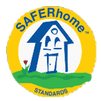Municipal Members:
- City of Vernon
- City of Maple Ridge
- City of Armstrong
- Support HUMAN sustainability in your community
- Resolve age-in-place solutions in housing
- Increase housing affordability, reduce social segregation and deliver a proven building standard
Communities are changing. Housing should too.
Sustainability includes people. Families are diverse. The next generation of housing needs to be functional and flexible.
True sustainability requires a built environment that also sustains its occupants. Not just today, but throughout their lifetimes as families grow, age, and change.
With pressing urgency, municipalities and regional governments across Canada are looking for housing solutions for their changing communities, one major segment being seniors. Statistics show that by the year 2032, 48% of North Americans will be 65 years of age or older. Back in 1993, CMHC estimated a need to build seniors’ housing at a rate of 50,000 homes per year, every year for the next 20 years.... We have alot of work to do!
Importantly, seniors’ housing has to be more than simply low-cost. It must also reduce falling hazards, support multi-generational living and provide aging in place with independence, and, be provided in large numbers. The answer lies not in building separate, segregated seniors’ housing, but rather in developing main market housing projects that will support all users.
There is an abundance of disability-based criteria available. However, these solutions are no longer socially acceptable because they segregate and negatively label the occupant as being somehow lesser than other members of society. Despite the fact that municipalities have a real desire to accommodate the public’s best interest and its diverse needs, existing standards do not work universally, and are, in fact, hurting the very people they are trying to help. SAFERhome Standards effectively addresses this issue.
SAFERhome Standards is the solution
SAFERhome Standards offers a low-cost, simple, and effective solution to allow people to age in place. Any and all new housing construction can effectively integrate our Standards today. No need to change the building code; all of the 15 SAFERhome Standards are within the existing Provincial and National building codes and can easily be applied. Need reassurance? Our non-profit initiatives are funded by the BC Ministry of Housing. The SAFERhome Standards are included in the BC Housing Design Guidelines and Construction Standards.
If your community starts integrating SAFERhome Standards into all new housing construction, your ability to offer seniors a place to age-in-place increases dramatically without the community having to build additional housing, often labeled “seniors’ housing”. An additional benefit is that your community gains housing that also meets many needs for people with accessibility issues.
Join us
Join the growing proactive communities that are building for the future:
- Contact us for a free presentation
- Order our in-depth manual
- Become a MUNICIPAL Member. Receive a free two hour training session, 80 free manuals ($1,500 value) and more. Contact us for your Municipal Membership package.
Need more information?
- The Taxpayer & Government
- What does the SAFERhome program mean to your city?
- How does SAFERhomes help sustain the community?
- Addressing ‘accessibility’ issues
- Why not just renovate?
- The Bottom Line
The Taxpayer & Government
Accidental falls cost the Canadian economy billions of dollars a year. 80% of all children in BC Children’s Hospital are there due to preventable accidents in the home. About one in three people over the age 65 will fall at home this year in BC. A home that is SAFER-certified substantially reduces people’s risk of falling in the home.
The World Health Organization’s (WHO) report on “Global Age-friendly Cities: A Guide” (2007) clearly states the multiple challenges an aging population places on communities. Enabling seniors to age in place being one key issue:
“…. people frequently feel that more needs to be done to ensure housing is appropriate for older people.”
“The ability to modify one’s house or apartment also affects the ability of older people to continue to live comfortably at home.”
Canadian Public Health Agency of Canada (PHAC 2008) Highlights of Focus Group Discussions mentions:
“While some seniors recognize that their older homes are not functional for an aging person, they may not be able to afford the upgrades and adaptations that would improve living conditions.”
“Design problems were another frequently mentioned barrier.”
“Age-friendly barriers include …. poorly designed housing, including features that reduce mobility.”
What does the SAFERhome Standards Program mean for your city?
- Ensures that housing starts meet the real needs of the community as urban populations grow, demographics shift and an aging population becomes a priority.
- Helps create affordable, sustainable housing with little cost to the municipality.
- Allow cities to support, track, and confirm building standards addressing human sustainability without having to build in-house programs or hire more inspectors.
- Allows development projects to move more efficiently through the City Hall system because more than 70% of the community social housing issues associated with the design and approval process are removed.
- Gives people a livable environment to age-in-place, and the municipality reduces the problematic strain on the healthcare system and becomes part of the solution.
- Reduces the need for segregated and labeled social housing that historically led to devalued, ghetto-like environment.
- Creates more integrated and inclusive neighbourhoods.
How does SAFERhome Standards help sustain the community?
- Lowers the municipal costs needed to deliver appropriate housing for the needs of our growing and aging population, and the community as a whole.
- Lowers healthcare and support costs.
- Adds flexibility to homes, increasing their value in the real estate market.
- Increases housing options for people and families that want to stay within their community as they grow or age.
- Improves the quality of life in neighborhoods.
- Prevents social labeling.
- Lowers future renovation expenditures for home-owners.
Addressing "accessibility" Issues
Sometimes out of a desperate need for housing, other times because of a reliance on building code minimums, most of the “accessible” housing stock in BC is either homemade and so specific to one person’s needs that it does not easily transfer to other users. Or it is based on an institutional model of access, focused on people with mobility impairments and wheelchair users – destroying the environment of a “normal” home in the process.
The institutional look of “wheelchair housing” has left a negative stereotype on accessible housing. People don’t want to live in institutions. While aging is inevitable, living in an institution is to be put off as long as possible.
SAERhome Standards integrates Universal Design Criteria
Universal Design is the design of products and environments to be usable by all people, to the greatest extent possible, without the need for adaptation or specialized design. Ron Mace
Why not just renovate?
The cost of incorporating the SAFERhome criteria into a new building development is approximately $500 for multiple-family units (MURBS/MSRT) or $1,000 for single family homes. The cost of renovating or retrofitting that same program into an existing building is over $100,000.
In most cases it is more viable to sell an old house as a normal home at normal real estate values and buy a new home with the simple SAFERhome Standards included.



